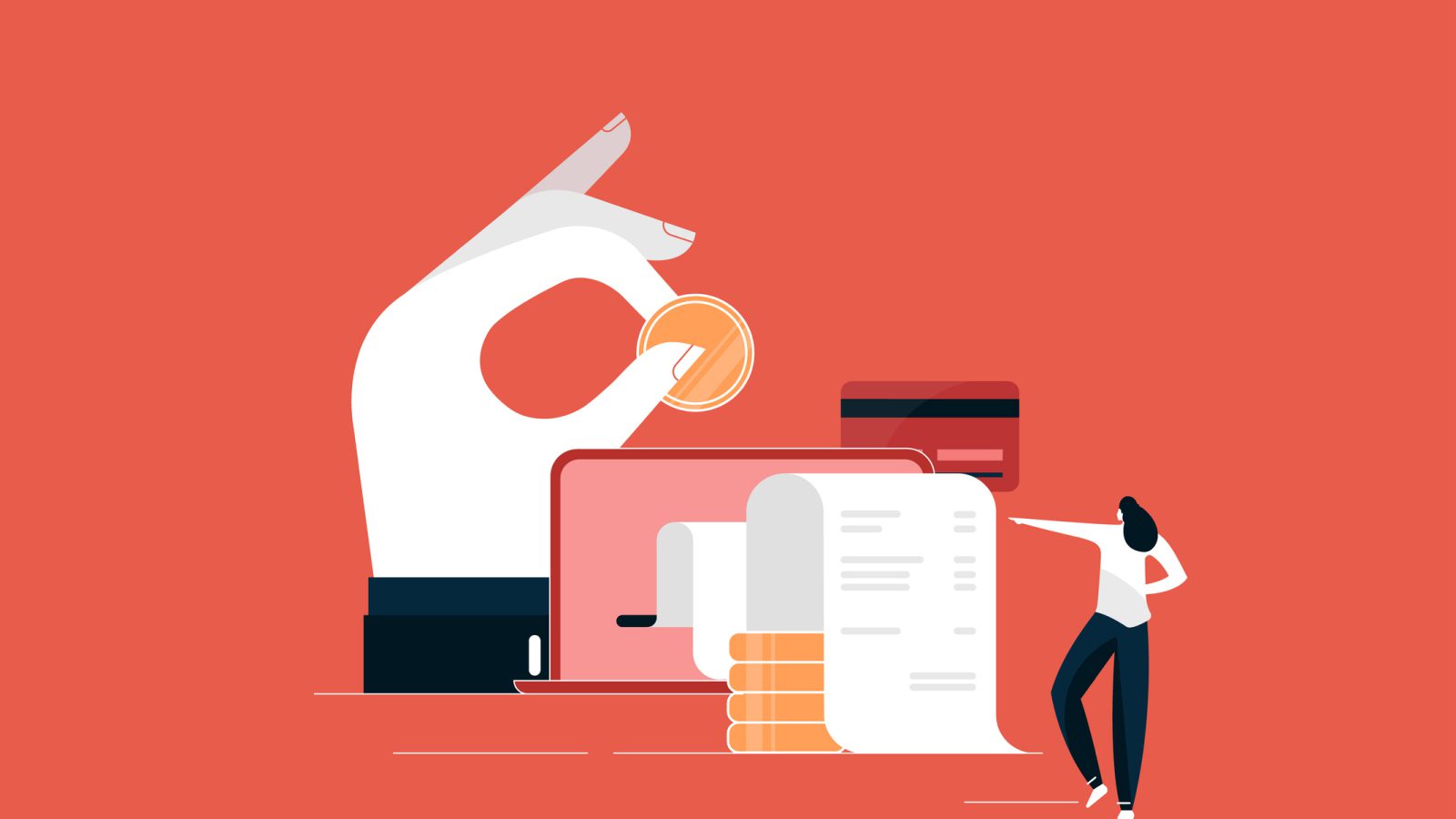No matter the size, from independently run small businesses to global conglomerates, no company can be profitable without adequately managing its finances.
Consistent cash inflow is what keeps the engine running. But without an efficient accounts receivable process, the business will be forced to deal with overdue payments, unpaid debts, delinquent accounts, and more.
Keep reading to find out what the accounts receivable process is and how to build one that works, so you can take your time back and focus on business growth.
What is the Accounts Receivable Process?
An accounts receivable (AR) is an asset recorded on the business’s balance sheet after a customer makes a purchase and a physical or electronic invoice is sent. When we talk about the accounts receivable process, we’re referring to how a company receives those payments from customers — from setting up smart credit practices and payment terms all the way to maintaining accounting records.
Efficient accounts receivable management brings payments to the business before an invoice is due or becomes a bad debt, ensuring healthy cash flow.
For example, let’s look at how this process works for an electric company.
People use electricity daily. They’re not charged every day, however. Instead, the company sends a monthly invoice stating the amount owed for the previous month.
In short, the electric company provides electricity on credit for their customers. What’s owed by the customers for their usage is the accounts receivable. The way the company ultimately gets paid is through the accounts receivable or collections process.
Understanding the Accounts Receivable Process
So what does this process actually look like? Let’s break down the typical accounts receivables process step-by-step:
- Setting up credit policies
- Issuing invoices
- Collecting payments
- Maintaining AR reports
Let’s dive into each of these a little deeper so you can understand how each step can impact the business in terms of cash flow.
1. Setting up credit policies
The first step in the collection process is identifying a customer’s credit worthiness. A business needs to develop clear credit terms detailing payment time periods, interest rates, and credit limits. This will protect the company in case of outstanding invoices and payment delays.
Ultimately, businesses need to build an intelligent credit policy that lays out clear procedures for evaluating debtors through credit checks and/or a credit application process. They also must make sure that the policy isn’t so intense that it hampers business profitability.
2. Issuing Invoices
Once the credit terms are finalized, the next step is creating a customer invoice stating the amount they owe for the product or service they received. The invoice should detail the following:
- What the customer is paying for, including the product details and usage if relevant
- Any important details regarding the price, such as payment discounts
- The due date by which the customer must pay their balance
- Clear instructions for how to pay, including which payment methods the business accepts
- A unique invoice number to ensure proper internal categorization and tracking
After you’ve created the invoice, it must be sent on time. If you don’t give your customers the opportunity to make prompt payments, that can create delays for your overall finance and accounting processes.
Finally, you can optimize the invoicing process by providing incentives for annual subscriptions (versus monthly). If customers pay upfront, that will help the business maintain a healthy cash flow.
?A Helpful Read: How to Make Recurring Invoicing More Efficient
3. Collecting Payments
The most crucial step in the AR process is collecting the dues. Once the invoice reaches your customers, you need to engage proactively with them and create a fool-proof collection strategy.
Your accounts receivable collection efforts should include:
- Segmenting individual customers based on payment history to build unique collection journeys
- Empowering the accounts receivable team with a set of predefined email templates that they can quickly edit and use on the go
- Setting email reminders on auto-pilot, including a consistent follow-up sequence based on customer interactions
- Tackling late payments and reducing the risk of involuntary churn due to failed payments
- Closely monitoring customer engagement and setting up personalized workflows to increase collection effectiveness
4. Maintaining AR Reports
To understand the effectiveness of your AR process, you need to maintain in-depth records of payments due and received. These AR insights will give your team visibility, allowing them to make informed decisions.
With accounts receivable automation software like Chargebee Receivables, finance teams can get actionable insights on the right KPIs. That includes things like DSOs, aging reports, and cash flow reports.
These exhaustive reports are necessary for identifying concerns before they become a cash-flow crunch for your business. For instance, if a particular customer keeps making late payments, you can use personalized reminders to enhance collection efficiency and deliver a better customer experience.
It will also help you withhold or tweak the product and service offerings until the customer pays their overdue balances, ensuring you don’t lose money.
Manual vs. automated AR processes
Before the ease of digital automation, accounts receivables management was completely manual. If lucky, businesses may have had some accounting system to help generate an invoice, but there were still multiple touchpoints throughout the order-to-cash cycle.
The traditional process usually involves:
- Invoice generation through MS Word or Excel spreadsheets
- Printing paper invoices and dispatching them, or manually emailing digital invoices
- Manual payment verification and follow-up through phone calls or email
- Manual entries and reconciliation of financial statements
This creates a few obvious challenges, such as the below:
- It’s incredibly time-consuming
- It opens up huge potential for human error
- It can lead to revenue leakage
- It creates an overall inefficient AR workflow
Thankfully, better options help fully automate the accounts receivable process and remove the above-mentioned challenges. Today business owners have the option to use sophisticated accounting software, like Chargebee Receivables, which automates the entire AR cycle.
Furthermore, it removes the possibility of human error in tracking customer payments. Every payment is instantly updated, and with powerful AR reporting, collectors can spend more time identifying patterns and building better collection strategies.
3 Benefits of AR automation
As your business grows, all the challenges of manual AR can lead to to missed revenue opportunities. Automating the accounts receivable process can solve those challenges and lead to massive business growth.
Here are the 3 main benefits of accounts receivable automation:
- Speeds up collection efforts with automated payment retries, payment reminders, and smart dunning
- Improves cash flow by ensuring the accuracy of invoice content, automatically sending invoices on time, and simplifying collection management
- Saves you time, effort, and money by streamlining your processes and reducing the need for manual interventions
All of the above benefits of AR automation will give your team the energy and resources they need to focus on more meaningful tasks.
With automation, you can resolve the many headaches that come from following up on overdue invoices, chasing down consistent cash flow, and creating accurate reports. If you haven’t considered automation yet, now’s the time.
Automating AR with Chargebee Receivables
AR Automation is no longer a “nice-to-have” for high-growth SaaS businesses. A manual accounts receivable process can leak ~3% of your revenue even with an ERP or accounting system in place.
Get back in the driver’s seat with Chargebee Receivables and supercharge your cash flow.
Here’s how our accounts recievable automation solution can solve the pain points behind manual processes:
- Enhance collection efficiency with intelligent automation
End the time-consuming manual follow-up process by building end-to-end auto engagement workflows for payment reminders - Empower teams with real-time AR data
Get actionable insights across the order-to-cash cycle that helps teams with effective client interactions - Ensure hassle-free collaboration
Drive alignment between finance, sales, customer success, and operations with an integrated platform - Integrate seamlessly with leading platforms
Connect your existing ERPs, accounting solutions, and payment gateway providers to get a complete view of your AR in a single dashboard - Improve customer satisfaction
Offer an easy-to-use self-care portal with upcoming payments visibility and faster dispute resolution to your customers
In Closing
Keeping track of your receivables is a complicated process. It’s a balancing act to collect payments on time with minimal effort while reducing collection expenses and maintaining a good customer experience.
If you want to get rid of manual AR processes and say goodbye to cash flow disruption, get started with Chargebee Receivables today. We’re here to help you start building a stronger and more efficient accounting process.


